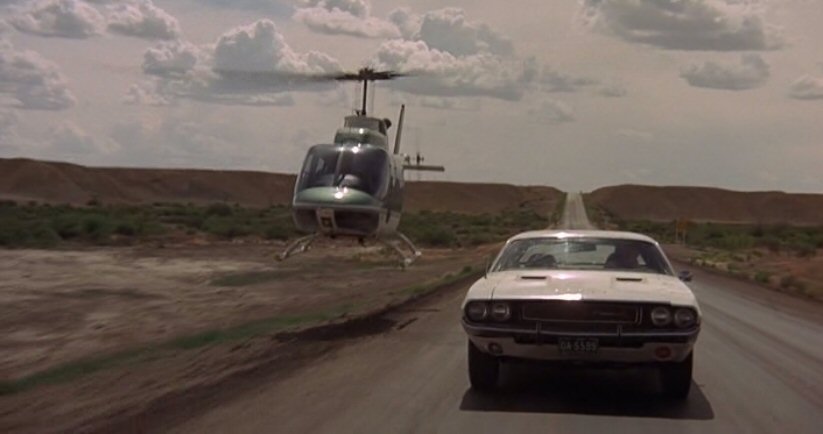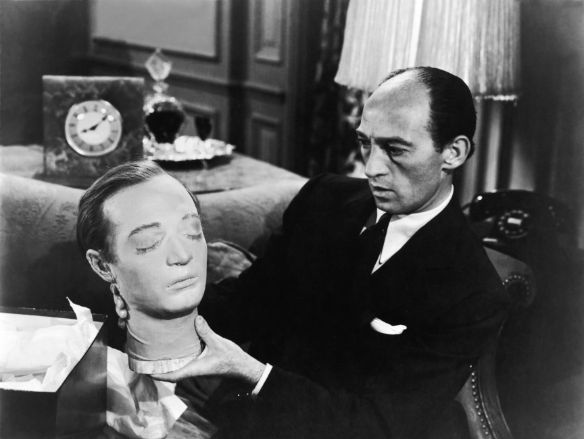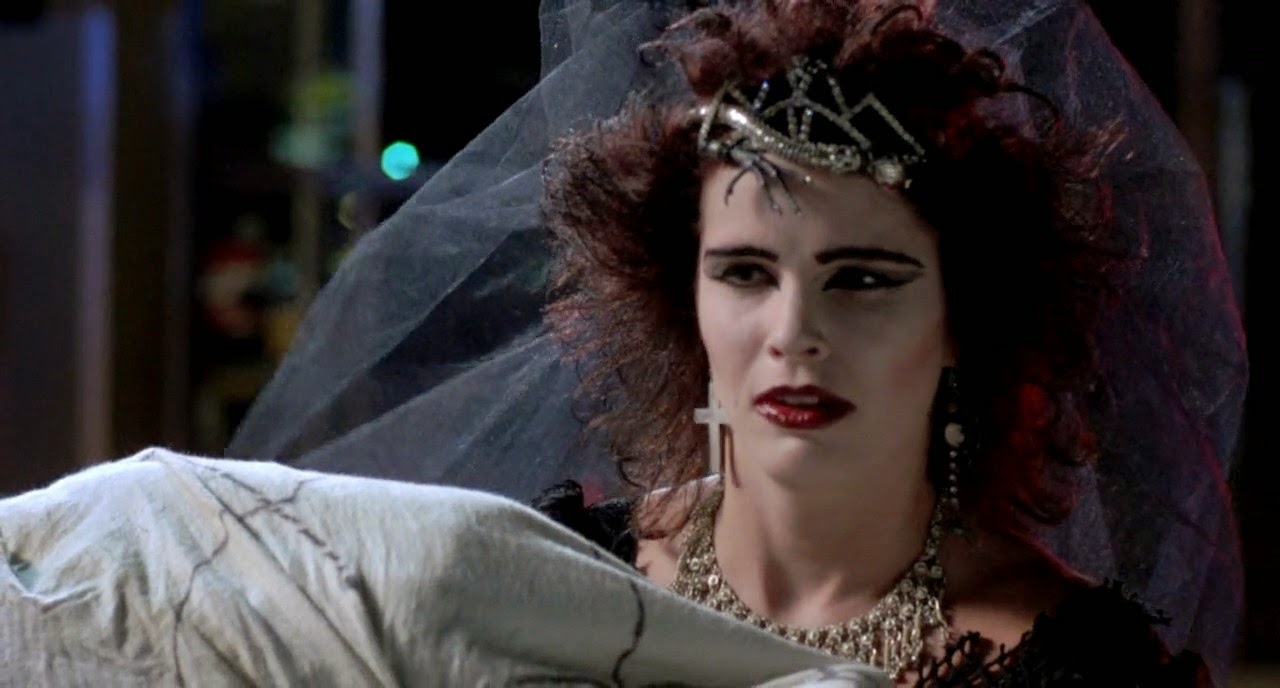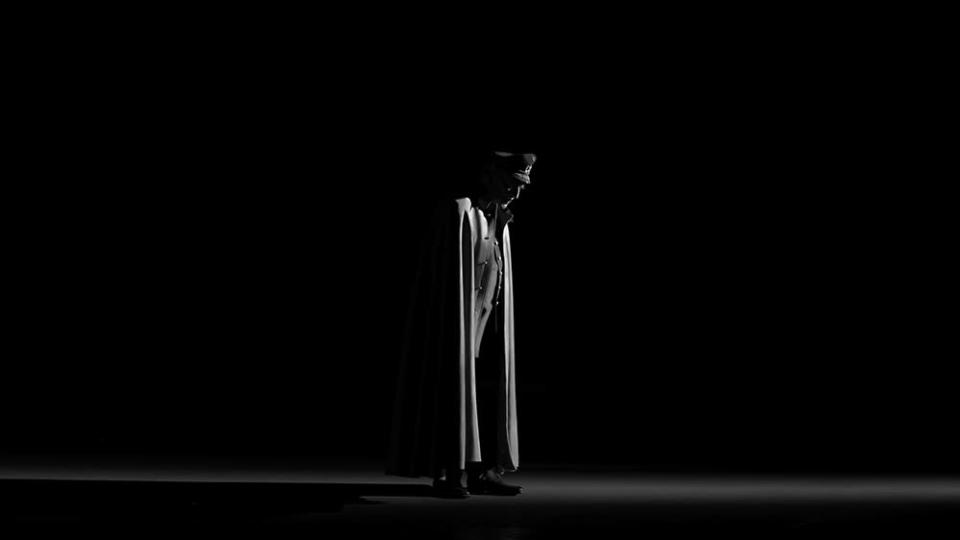Vanishing Point (1971)
![]()
Vanishing Point (1971) Directed by Richard C. Sarafian
Aimless Kowalski (Barry Newman) has nothing to lose, he is a foolhardy dead man at the wheel driving at full speed defying the mile per hour limits on the desolate highways of the vast American landscape. The police doggedly chase the blasé Kowalski, a car delivery driver leading a speedy white 1970 Dodge Challenger, which is due to be delivered to San Francisco by Monday. The lethal expediency with which Kowalski drives and manipulates this sleek muscle car renders all efforts by the Denver police to catch him, futile. Upon leaving the state of Colorado, Nevada authorities are just as ineffective in catching Kowalski; the police do not have a single successful plan to halt the stentorian engine of the Dodge Challenger. What is Kowalski seeking with this defiant act against the authorities? What is he trying to prove? Only Kowalski’s alienated mind knows the answers. His suicidal feat could mean a myriad of things, but the cool screenplay by Cuban novelist Guillermo Cabrera, AKA Guillermo Cain, never specifies the thoughts of our hopeless hero. Although this ambiguity confounds and thrills with the same intensity, Kowalski’s unruly stunts become universalized, popularized among an audience that identifies with the directionless philosophy of this dead man in life who seems to be possessed by the propulsive freedom of the Dodge Challenger, or rather the latter seems to be possessed by the existential emptiness of its driver.
Richard C. Sarafian’s jaw-dropping Vanishing Point poeticizes male alienation in one of the richest American settings in the history of cinema. It is the neglected masterpiece of new Hollywood cinema. A story on wheels that embodies the tragic cycle of life as an epic biblical reflection. Okay, maybe the laid-back and enviably cool Kowalski is not a messiah, but somehow – be it spiritual or merely material – the great Kowalski provides hope to the American people with his polysemous anti-establishment attitude. These are the 70’s, the sexual revolution is at its climax and the modus vivendi of the hippies is the cultural mirage of modernity; here anyone who tenaciously hunts Kowalski is an enemy of the American people, because the antagonistic reaction wants to stop Kowalski’s free spirit and that is precisely what his audience does not want to happen. The authorities could be catching the criminals who endanger the tranquility of American families, but no, they prefer to invest their entire budget in capturing Kowalski. The antagonism between Kowalski and the police as a narrative methodology – which is purely, and effectively, visual – represent distinct philosophies; it is very likely that Kowalski wants to dismantle state corruption, although this is just my hypothesis.
Kowalski played by Barry Newman is the great character that nobody knows in the history of seventies cinema. And if they do know him, he doesn’t have the same prestige as his contemporaries. By this I mean both Kowalski the character and Barry Newman the actor. Newman gives a sterling performance, little dialogue, pure feeling. We never quite get to know the expert driver of the most wanted white Dodge Challenger in the United States. It is evident that the literary ploy of Guillermo Cain’s screenplay is to never reveal in detail who the hell Kowalski is. The elliptical effect is masterful, as I really don’t think Kowalski would have been as compelling if he had been given a deciphered past. This character is a myth and as such he is always treated with the textures of a great legend. The plot throws in a few flashbacks that reveal Kowalski in love with an alluring blonde girl, who dies surfing some monstrous waves. It is also shown that Kowalski was once an authority, to be more specific he was a cop, yes, he was a cop just like those who chase him and wish to see him behind bars or dead. He is a veteran of the Vietnam War and came home with a medal of honor. Ironically, he is the poster child. And now for some unfathomable reason, Kowalski rebels against the entire system he once served. That’s the only background we learn about this cryptic character, nothing else and thank god for that, because this character operates on a visceral level, not an intellectual one.
In the plot we know that Kowalski has the assignment to deliver that Dodge Challenger in San Francisco, and we also find out that he made a bet with a drug dealer from whom he buys amphetamines that he would arrive in San Francisco early, i.e. on Sunday. We can deduce that this is one of the explanations for his imprudent speeding down the road, but we only think so at first. Once Kowalski continues on his way with all the police chasing him we comprehend that his ulterior motives go beyond a meaningless bet; Kowalski is looking for something we don’t know and grasp. But even so, we accompany him on this journey to nowhere and root for him to emerge undefeated from the relentless chase. On his madcap trip he meets different characters, some memorable, some forgettable, but all playing a major role in Kowalski’s destiny. The exhilarating story reminds me of those biblical passages where the lost man encountered different characters that would serve as reflections for him. Some angels, others demons. Here it occurs in a very analogous fashion. A ravishing Charlotte Rampling – she only appears in the UK version, which I recommend as it is vastly superior to the American version – plays a hitchhiker that Kowalski picks up as a good Samaritan. Rampling plays the most puzzling of all the peculiar characters Kowalski encounters, there’s something mystical about her that seems to foreshadow the denouement. Kowalski doesn’t necessarily learn anything from his fearlessness and madness as he travels across the United States while being hunted by the authorities, but I sense that his fate was premeditated, he knew what he was going for and pursued it in the most dauntless manner. An American martyr.
The film is orchestrated as one grand sweeping chase, there is no plot per se, what exists are a series of mini plots that build into a holistic storytelling. Sarafian’s phenomenal direction is all about delivering the ultimate view of this heart-stopping chase, and ultimately poignant tragedy, employing some of the most cinematic camera angles I’ve ever seen. However, what makes the film memorable as a seminal piece of cinematic formalism à la rock n roll is its soaring use of music. Is Vanishing Point a musical? I think so, especially in how the music is an integral part of shaping Kowalski’s lifeless world. The accurate selection of numerous iconic songs of the era transforms the film into pure audiovisual ecstasy; there is more music than dialogue, and the stimulation it adds to the images is invigorating, never have American landscapes looked so existential. All the songs emanate from Kowalski’s car radio, the groovy KOW radio station, hosted by an amusingly loquacious blind black deejay nicknamed Super Soul (played by the awesome Cleavon Little). Super Soul is pro-Kowalski, sends him tips from the radio and philosophizes with him. Super Soul calls Kowalski “the last American hero”. I don’t know if the latter is pure demagoguery towards the character, but if there is any truth in it, it is that Vanishing Point is given a special, very exclusive treatment by Richard C. Sarafian, who helms this car opera as if it were the last great American movie. Hyperbolic or not, it may be veridical. Long live Kowalski!






